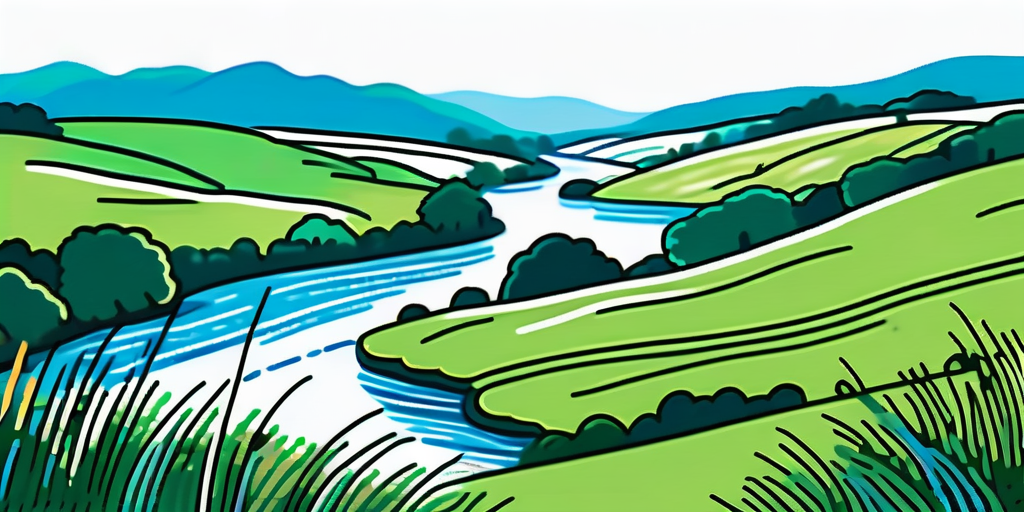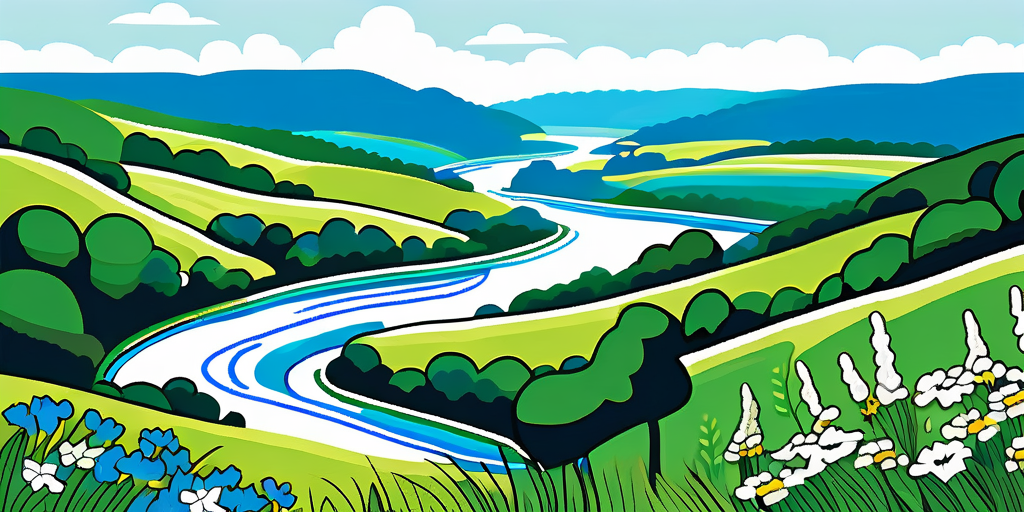
Home to a breathtaking array of natural wonders, Tennessee National is a treasure trove of open spaces that invites exploration and appreciation. From dense forests to serene lakes, the landscapes offer countless opportunities for adventure, relaxation, and connection with nature. This article delves into the remarkable beauty of Tennessee National, revealing its ecosystems, the significance of its open spaces, and how to enjoy them responsibly.
Tennessee National is renowned for its unspoiled wilderness and diverse landscapes that cater to various interests and activities. Tourists and locals alike can immerse themselves in the rich tapestry of nature, discovering sights and experiences that are both captivating and restorative.

At the heart of Tennessee National lies an unspoiled wilderness that stretches as far as the eye can see. This pristine area is home to sprawling forests, lush greenery, and an impressive array of wildlife. Visitors can hike through the dense underbrush, where the air is thick with the scent of earth and pine. The symphony of chirping birds and rustling leaves creates a tranquil backdrop that enhances the experience of exploration.
Each trail leads adventurers to new discoveries, from hidden waterfalls to expansive meadows bathed in sunlight. The untouched quality of this wilderness inspires a deep appreciation for nature, encouraging visitors to experience the serenity and solitude it offers. Wildlife enthusiasts may be fortunate enough to spot deer gracefully moving through the thickets or catch a glimpse of a soaring hawk overhead. The vibrant colors of wildflowers in springtime add a splash of beauty to the landscape, while the changing foliage in autumn creates a breathtaking mosaic of reds, oranges, and yellows, inviting photographers and nature lovers alike to capture the moment.
The geographical diversity of Tennessee National is astonishing. From rolling hills to rugged mountains, and from tranquil riverbanks to breathtaking vistas, the scenery transforms dramatically across the park. This diversity not only enhances visual allure but also supports varied ecosystems conducive to an abundance of flora and fauna.
For those seeking an adrenaline rush, the rugged terrains offer thrilling challenges for rock climbers and mountain bikers. Conversely, for those interested in peaceful reflection, the calm shores of lakes provide perfect spots for birdwatching or enjoying a quiet picnic. The sheer variety offered by Tennessee National ensures there is something for everyone. Additionally, the park's waterways are perfect for kayaking and canoeing, allowing visitors to glide along serene lakes or navigate the gentle currents of meandering rivers. The sound of water lapping against the hull creates a soothing rhythm, inviting paddlers to connect with the environment in a unique and intimate way. As the sun sets, casting golden hues across the water, the experience becomes a magical moment that lingers in the memory long after the journey ends.
Open spaces in Tennessee National play an essential role in preserving the natural environment and enriching the visitor experience. By understanding their significance, we can better appreciate and protect these areas that give life to so many species and provide a refuge for human exploration.

Open spaces within Tennessee National serve as vital habitats for a plethora of wildlife species. From majestic deer grazing in meadows to vibrant songbirds flitting through the trees, the presence of these open areas supports ecological balance and biodiversity. Various habitats, such as wetlands and grasslands, are crucial for different species to thrive.
Additionally, these spaces act as migration corridors for species traveling between different regions. As urban developments encroach upon natural habitats, maintaining these open spaces becomes increasingly important for sustaining wildlife populations and ensuring healthy ecosystems. The preservation of these areas not only supports resident species but also provides critical resources for migratory birds and other animals that depend on specific habitats during their seasonal journeys. This interconnectedness highlights the importance of open spaces in fostering a resilient and diverse ecosystem.
The expansive open spaces of Tennessee National greatly enhance the visitor experience, providing a sense of freedom and adventure. They allow people to escape urban environments, recharge their spirits, and reconnect with nature. The experience of walking through an evergreen forest or gliding across a calm lake fosters a sense of peace and well-being.
Visitors often report that the tranquility found in these open spaces allows them to clear their minds and focus on the beauty surrounding them. The opportunity to observe wildlife in their natural habitats adds to the richness of the experience, creating lasting memories and deepening the appreciation for the wonders of nature. Furthermore, these open areas provide ample opportunities for recreational activities such as hiking, birdwatching, and photography, allowing individuals and families to engage with the environment in meaningful ways. The diverse landscapes encourage exploration and adventure, making every visit unique and memorable, as each season brings new sights, sounds, and experiences to cherish.
The unique attributes of Tennessee National's open spaces contribute significantly to its charm and allure. From geological formations to vibrant ecosystems, these features make the park a captivating destination for nature lovers.

Tennessee National is laced with geological wonders that tell the story of the Earth’s formation. From majestic cliffs to intricate cave systems, the landscapes showcase the dynamic processes that have shaped the region over millennia. Notable formations include limestone outcrops and rugged terrain that highlight the geological diversity of the area.
Visitors can embark on guided tours to learn more about the geological history and the formations that have created the stunning vistas. Such education not only enhances appreciation for the landscape but also emphasizes the importance of conserving these natural wonders for future generations. Additionally, the park is home to several fossil sites, where enthusiasts can uncover remnants of ancient marine life, providing a tangible connection to the distant past. These sites serve as a reminder of the ever-changing nature of our planet and the rich tapestry of life that has existed here.
One of the most compelling aspects of Tennessee National is its rich biodiversity. The flora ranges from towering trees to colorful wildflowers, while the fauna includes everything from soaring eagles to playful otters. This incredible variety thrives within the park open spaces and is vital for maintaining healthy ecosystems.
The changing seasons bring unique beauty to these landscapes, with vibrant blossoms in spring, lush green foliage in summer, colorful foliage in autumn, and tranquil scenes in winter with snow-capped trees. Each season offers a different lens through which to experience and appreciate the natural beauty of Tennessee National. Furthermore, the park's diverse habitats, including wetlands, forests, and meadows, provide essential resources for countless species. Birdwatchers can delight in spotting migratory species during their seasonal journeys, while photographers can capture the breathtaking contrasts of light and color that shift with the time of day. The interplay between flora and fauna creates a dynamic environment, making every visit a unique experience filled with discovery and wonder.
While Tennessee National offers endless opportunities for enjoyment, it is crucial to engage with its beauty responsibly. Visitors are encouraged to adopt practices that promote conservation and ensure that these spaces remain preserved for future generations.
To enjoy Tennessee National respectfully, visitors should adhere to certain guidelines that protect its ecological integrity. These include:
By following these guidelines, outdoor enthusiasts can ensure that they contribute to the preservation of Tennessee National's open spaces while enhancing their own experience. Additionally, it is important to educate oneself about the local flora and fauna, as understanding the ecosystem can deepen the appreciation for the natural surroundings. Engaging in activities such as birdwatching or plant identification can transform a simple hike into an enriching educational experience, allowing visitors to connect more profoundly with the environment.
Conservation is a fundamental aspect of safeguarding the beauty and resources of Tennessee National. Numerous organizations and volunteers work tirelessly to protect these areas through various initiatives. Restoration projects, invasive species management, and community outreach programs are integral to these efforts. These initiatives not only focus on the physical restoration of habitats but also emphasize the importance of biodiversity, ensuring that native species thrive in their natural settings.
Engaging the community in conservation activities helps raise awareness and fosters a culture of stewardship among visitors and locals alike. Educational programs encourage responsible behaviors and highlight the importance of preserving open spaces. Regardless of an individual’s skill level, there are often opportunities to volunteer and make a tangible difference. Workshops on sustainable practices, guided nature walks, and citizen science projects are just a few ways individuals can get involved. By participating in these activities, visitors not only contribute to the health of the ecosystem but also forge connections with fellow nature enthusiasts, creating a supportive community dedicated to the preservation of Tennessee National's stunning landscapes.
As we look to the future, Tennessee National's open spaces face potential challenges that could impact their preservation and accessibility. It’s crucial for everyone to recognize these threats and actively contribute to initiatives aimed at protecting these cherished landscapes.
Threats to Tennessee National's open spaces include urban development, climate change, and pollution. As nearby populations grow, the encroachment of infrastructure can disrupt ecosystems and diminish the natural beauty of the park. Climate change poses additional risks, altering weather patterns and affecting wildlife habitats. The increasing frequency of extreme weather events, such as heavy rainfall and droughts, can lead to soil erosion and habitat degradation, making it increasingly difficult for native species to thrive.
Pollution, particularly in the form of littering and irresponsible industrial practices, can severely harm the delicate balance of these ecosystems. Water quality in nearby rivers and streams can suffer from runoff, affecting aquatic life and the overall health of the environment. Addressing these threats requires collective action and a commitment to sustainable practices. Community clean-up events, educational programs in schools, and partnerships with local businesses can all play a vital role in fostering a culture of environmental responsibility.
Conservation plays an indispensable role in safeguarding Tennessee National’s open spaces against these threats. Sustainable practices, habitat restoration, and public awareness are critical components of ongoing conservation efforts. Engaging with stakeholders, including local communities, government agencies, and environmental organizations, is essential for creating a cohesive strategy to protect these vital areas. Innovative conservation techniques, such as rewilding and the establishment of wildlife corridors, can significantly enhance biodiversity and resilience within these ecosystems.
By fostering an understanding of the ecological and recreational value of open spaces, we can inspire a movement of responsible enjoyment and long-term stewardship. Educational workshops and guided nature walks can help visitors appreciate the unique flora and fauna that inhabit these areas, encouraging them to become advocates for their preservation. Only through concerted efforts can we ensure that Tennessee National's open spaces remain a source of inspiration and beauty for generations to come. The active involvement of citizens in conservation initiatives not only strengthens community bonds but also cultivates a deeper connection to the natural world, reminding us all of the importance of protecting our shared heritage.